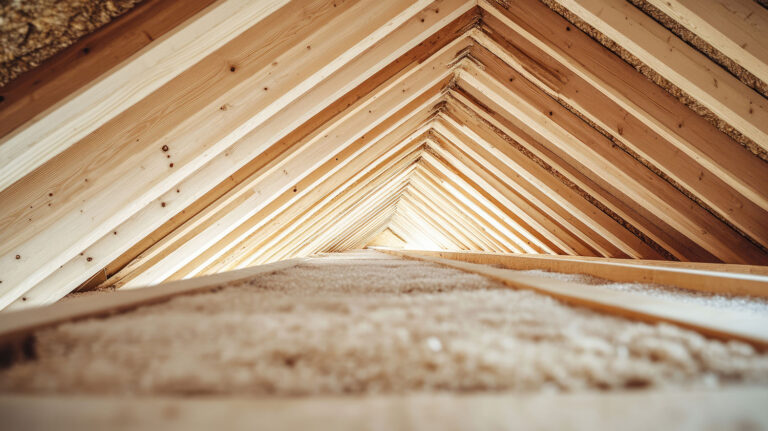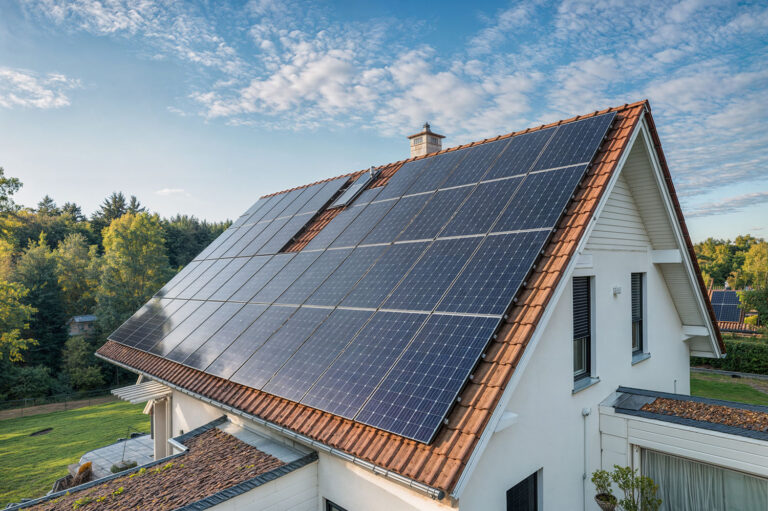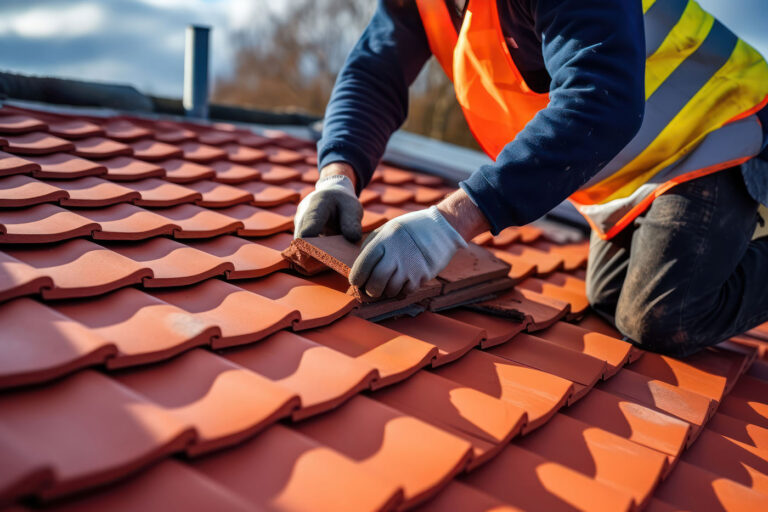Your home’s roof silently protects you against rain, wind, frost, blazing sun and, quite often, the unknown. But how often do you consider the actual condition of your roof? Can you trust what you see from the pavement? Or are hidden risks quietly developing just above your head?
A professional roofing survey can help. This process offers more than peace of mind—it gives you facts. It can prevent costly repairs, uncover small problems before they become emergencies, and put you on solid footing whether you’re buying, selling, or simply planning ahead.
Why wait for the next storm to raise the alarm? What if you could take control now and secure your home’s future?
What is a Roofing Survey?
A roofing survey is a detailed inspection carried out by specialists to assess the current state of a roof. It’s much more than a quick glance. Experts use a systematic checklist, often supplementing their eyes with advanced tools such as drones, moisture metres, and thermal cameras.
Surveys can be tailored to different property types and roof designs. A small Victorian cottage and a modern flat-roofed extension demand unique approaches. Professionals adapt their method to suit, ensuring nothing is missed.
Typical elements examined in a roofing survey:
- Tile and slate condition
- Flat roof membrane health
- Leadwork and flashing
- Gutters, valleys, and drainage
- Chimneys and skylights
- Signs of water ingress or leaks
- Structural integrity and timberwork
These inspections result in a clear assessment, often with detailed photos and recommendations.
Why Should Homeowners Commission a Roofing Survey?
Postponing a roofing survey can be tempting, especially when everything seems fine. Is it worth the investment? Is this just an indulgence or a necessity?
Let’s break down why this service is so valuable:
1. Early Problem Detection
Even tiny faults can snowball:
- A slipped tile leads to water seeping in.
- Blocked guttering sends rain back into your walls.
- Rot in the roof timbers spreads silently.
Catching these issues early means smaller, less expensive roof repairs. Data suggests that homeowners who schedule regular surveys spend 30% less on roof repairs over a 10-year period than those who wait for visible signs of damage.
2. Informed Purchasing Decisions
Thinking about buying a property? Relying on a standard homebuyer’s report isn’t always enough. A dedicated roofing survey digs deeper, revealing:
- Past repairs that weren’t completed to standard
- Hidden leaks masked by recent painting
- Potential longevity of the existing materials
These insights allow buyers to renegotiate, budget realistically, or walk away from a potentially risky investment.
3. Planning Renovations or Extensions
If you’re dreaming of a loft conversion or an extension, the roof’s condition can make or break your plans. Surveys highlight load-bearing capabilities, structural concerns, and suitability for solar panels or roof windows.
4. Insurance and Compliance
Insurance claims involving roofs are some of the most frequently contested. Insurers may ask for an up-to-date survey before underwriting policies or paying out on claims. Regular documentation of your roof’s status shows you’ve taken reasonable care.
Types of Roofing Surveys
The roofing survey industry isn’t one-size-fits-all. The type of survey recommended will depend on your goals, the property’s design, and any apparent issues.
Common survey types include:
Type | Situation Best Suited For | Typical Method |
|---|---|---|
Visual Inspection | Routine check or before property sale | Ladder and ground-based |
Drone Survey | Large/complex roofs, difficult access | High-def drone photography |
Moisture/Infrared Survey | Detecting concealed moisture, flat roofs | Infrared cameras, sensors |
Full Structural Survey | Significant age or previous roof issues | Structural engineer analysis |
Leak Detection Survey | After water ingress is suspected/reported | Tracer dye, smoke, thermal |
Not sure which you need? Many surveyors offer a free consultation to discuss your property and goals.
What Happens During a Professional Survey?
The process is usually collaborative. Here’s a step-by-step snapshot:
1. Scheduling and Preparation
Surveyors will coordinate with you to find the best date and ensure access to the roof and loft spaces. If you have areas of specific concern (like recent leaks or visible cracking), these should be highlighted at the outset.
2. Inspection Phase
Teams will:
- Examine external and internal roof elements
- Use ladders, scaffolding, or drones for full visibility
- Check for both obvious and subtle warning signs (e.g., discolouration, cracking, mould, loose fixings)
- Assess supporting structures from within the loft or property attic
- Test moisture levels if relevant
Surveys generally last anywhere from 45 minutes for a simple visual check, up to several hours for in-depth structural analysis.
3. Reporting
Homeowners receive a written report, often enhanced by annotated photographs or diagrams. It pinpoints urgent repair needs, recommends improvements, and offers maintenance tips.
Some companies provide a rating for the roof’s overall condition, making decisions simpler for those less familiar with roofing terms.
How Often Should You Have a Roofing Survey?
Roofs may last decades, but exposure to British weather, debris, and time mean their condition is never static.
General recommendations suggest:
- Once every 5 years for modern roofs in good condition
- Every 2-3 years for older tiles, thatch, or flat roofs
- After severe weather events: heavy storms, snow, heatwaves
- Before listing a property for sale or purchase
Newly built homes still under warranty may seem immune, but poorly executed work sometimes only appears after a couple of years.
What Problems Can a Survey Uncover?
The range is as varied as British architecture itself. Some of the most common findings include:
- Missing or cracked tiles/slates
- Blocked or damaged gutters
- Failing flat roof membranes with trapped moisture
- Flashings that have slipped or degraded
- Timber decay from hidden leaks
- Moss build-up casing accelerated wear
- Evidence of animal activity (birds, insects, or squirrels)
- Previously repaired flaws that require better workmanship
Occasionally, more substantial issues come to light: sagging caused by failed supports, widespread rot in battens, or asbestos in old roof materials.
Choosing a Surveyor: What Should You Ask?
Not all surveyors bring the same level of experience or impartiality. There are crucial questions to consider before making a choice:
- Do you carry professional indemnity insurance?
- Can you provide references from previous local clients?
- Will I receive a written, photographic report?
- Are your recommendations wholly independent (i.e., you don’t pressure for repair work from your own firm)?
Going with the cheapest option can sometimes mean poor or hurried inspection, so value should be weighed alongside cost.
Taking Action After Your Survey
A survey with a clean bill of health offers peace of mind. However, if repairs are needed, prioritisation matters.
Consider these steps:
- Tackle water ingress fast: leaks don’t improve with time
- Schedule any structural work before interior redecorating or insulation
- Keep up a basic maintenance routine: regular gutter clearing, moss removal, and visual checks
- Use the survey report when obtaining repair quotes, as a basis for what should be delivered
- File survey and repair documents safely; they can be persuasive evidence for buyers or insurers
Roofers sometimes uncover problems that go far beyond what the homeowner expects. Don’t panic; the report is a tool for resolving, not a sentence. Trust the process, and work with reputable contractors.
The Value of Knowledge
A roofing survey shines a light on one of your home’s biggest investments. For many, it’s the difference between unplanned expense and proactive care.
Responding to the simple question—how is your roof, really?—isn’t about fear. It’s about confidence. Whether you’re staying put or eyeing your next move, knowledge puts you in control.
So, when was your last survey? The view from the ground may look reassuring, but the facts speak for themselves. Book your roof survey today.







